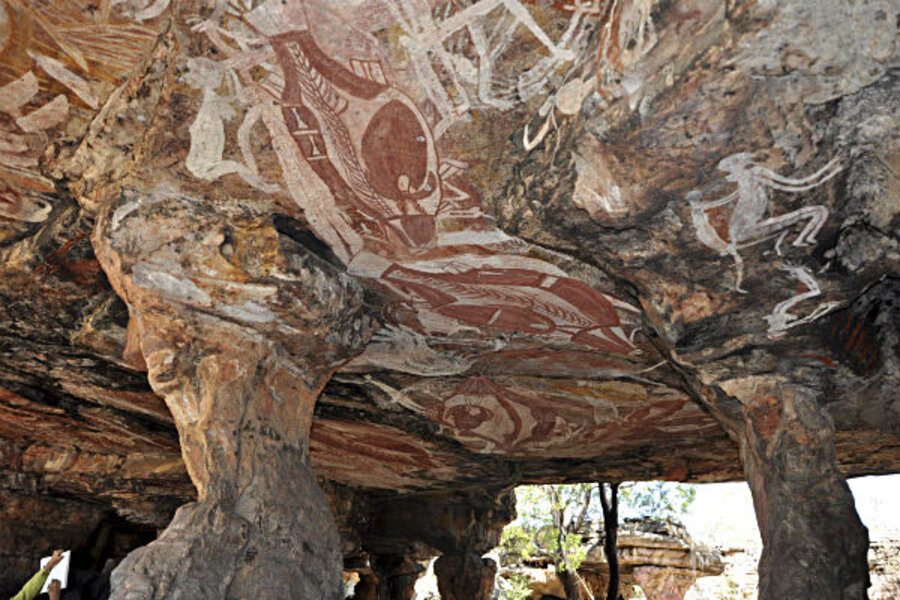


Source: Elliott Brennan (2016)
The Dreamtime (or Dreaming) is the basis of Aboriginal religion and culture and is the story of how the universe was created and how humans and animals should live within the universe. The Dreamtime is not necessarily just about the past, but instead exists outside of time, with no beginning or end. Read through the resources below to learn more about the Dreamtime.


Bunjil Shelter is located in the Black Range Scenic Reserve near Stawell and this is the only rockart painting of Bunjil known. It is widely regarded as one of the most significant cultural sites in south eastern Australia.

Baiame Cave is of state significance for its association with the main figure depicted in the cave, believed to be Baiame, who is understood by some Aboriginal people across NSW to be the creator, the ‘Father of All’, the most important ancestor and law-maker. The site is also of state significance for its history and associations with the Wonnarua, the Aboriginal people who are understood to be the traditional custodians of the artwork prior to and post colonisation. The painting is representative of the traditional heritage of the Aboriginal people of the Hunter Valley and of NSW.
Baiame Cave is also of state significance as a rare and representative indigenous rock art painting site in NSW. Rock art sites in NSW are more likely to feature smaller-scale engravings of animals or human figures, or painted hand stencils rather than large painted human figures. Although unusual in the NSW context this is one of many regional variations in rock art across NSW, and therefore has State-wide comparative and representative value. It is also of representative state significance as one of a series of sites associated with Baiame across NSW such as the nearby Mount Yenga, the Byrock granite outcrop, the copper deposits at Cobar, the Narran Lake and Baiame’s Ngunnhu (also known as the Brewarrina Fishtraps).

The walls of the Burrungkuy (Nourlangie) rock art site, in World Heritage-listed Kakadu National Park, have served as a shelter and canvas for thousands of years. In the main (Anbangbang) gallery you’ll see the Creation Ancestor Namondjok, and the Creation Ancestor Namarrkon, the Lightning Man.

Gabarnmung (or Nawarla Gabarnmung, Jawoyn for "(place of) hole in the rock"[1]) is an archaeological and rock art site in south-western Arnhem Land, in the Top End of Australia’s Northern Territory. Habitation of the site has been dated to at least 44,000 years ago, placing it among the oldest radiocarbon dated sites in Australia (known older sites, such as the nearby Madjedbebe, are dated stratigraphically). The oldest rock art was produced more than 28,000 years ago, making it the oldest securely dated prehistoric art in Australia.
Thought to be home to the world’s oldest art, Gabarnmung is so remote that it is accessible only by helicopter and so sacred that it is currently closed to people not of the Jawoyn tribe by decree of the traditional owners.


 Mythscapes : Aboriginal art of the desert
by
Mythscapes : Aboriginal art of the desert
by
 This is the dreaming: Australian aboriginal legends
by
This is the dreaming: Australian aboriginal legends
by